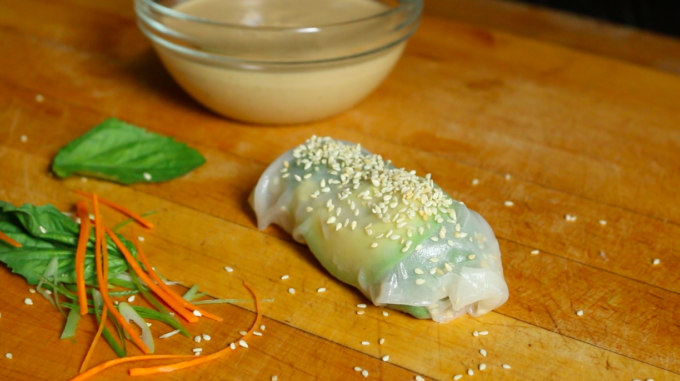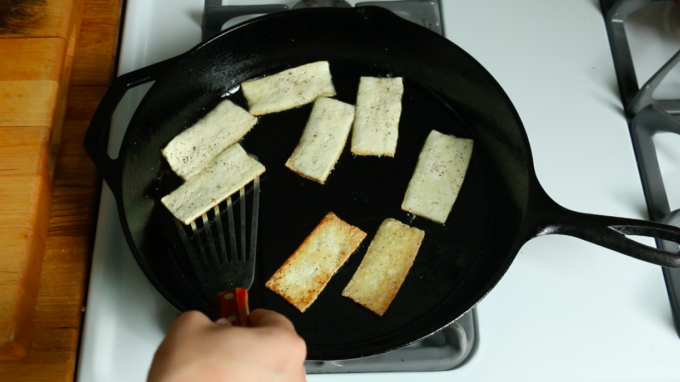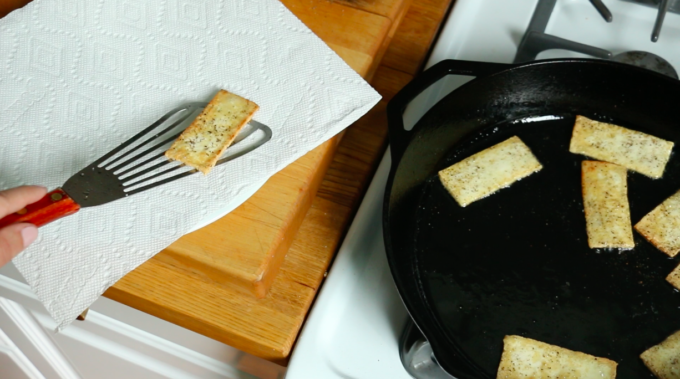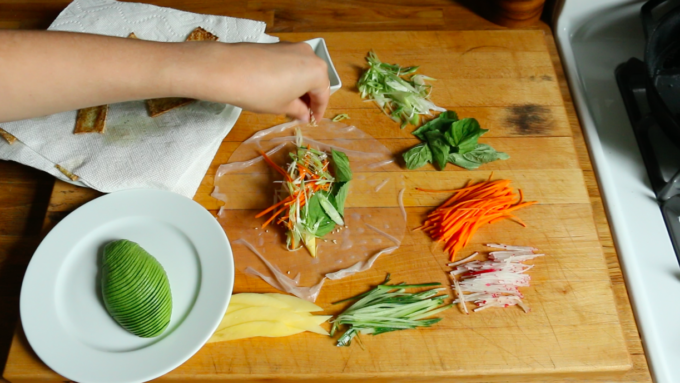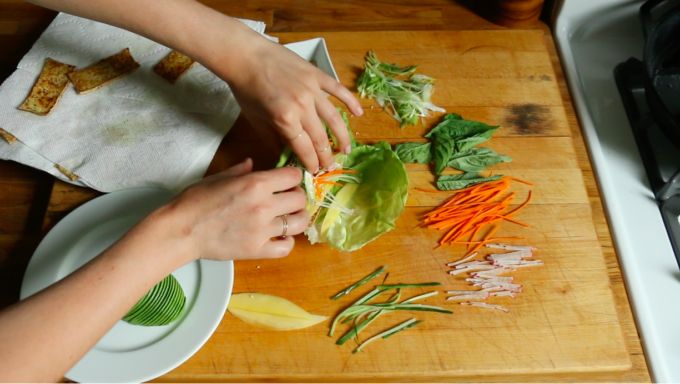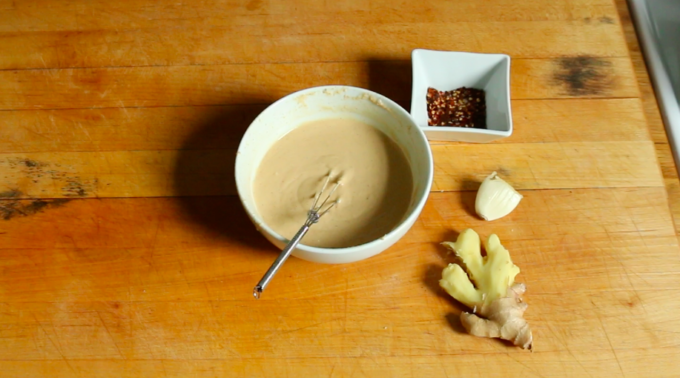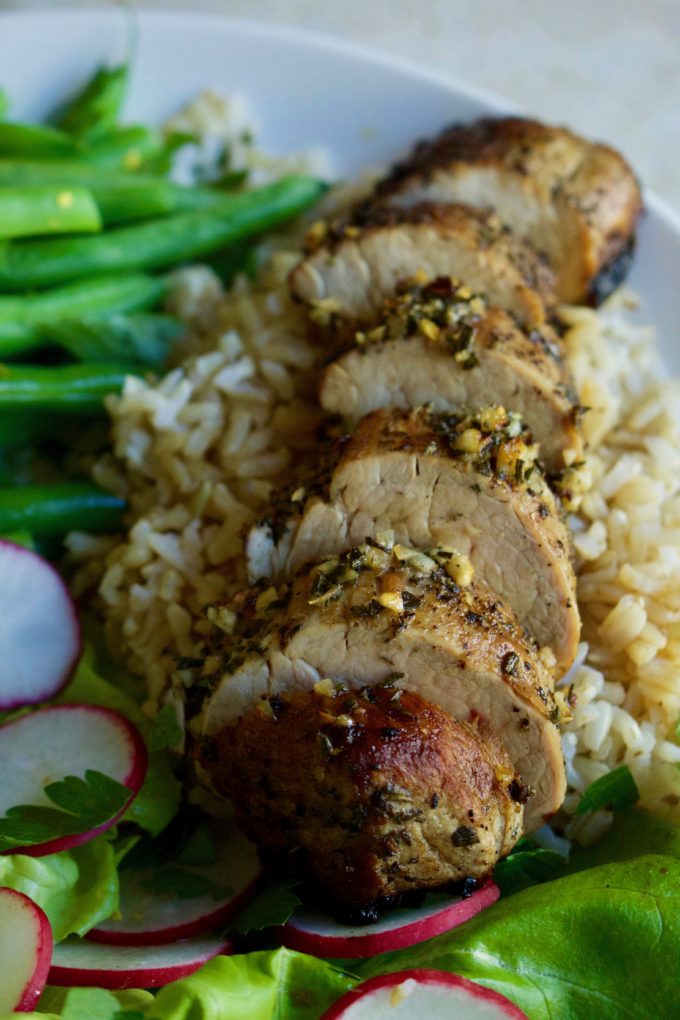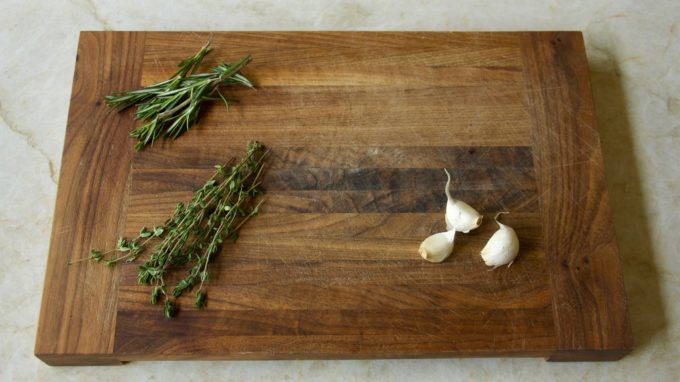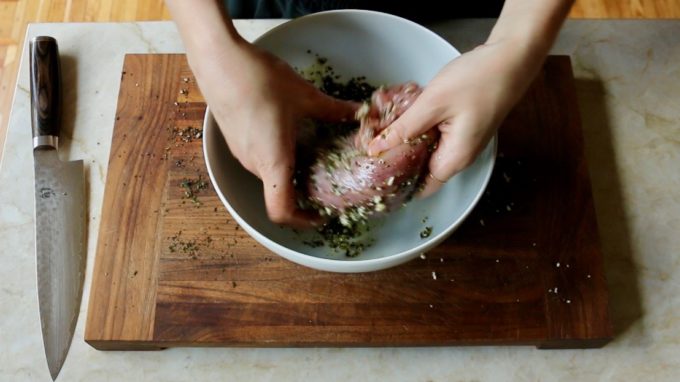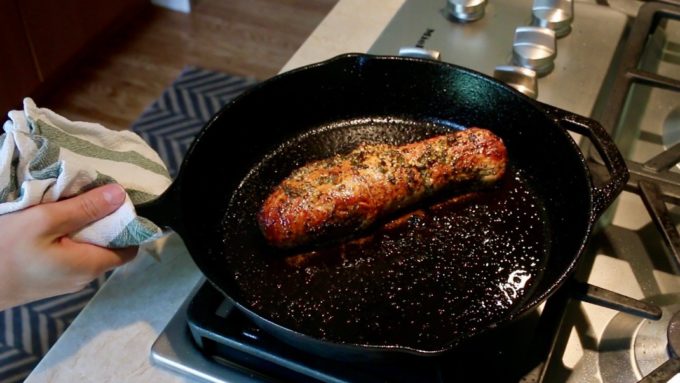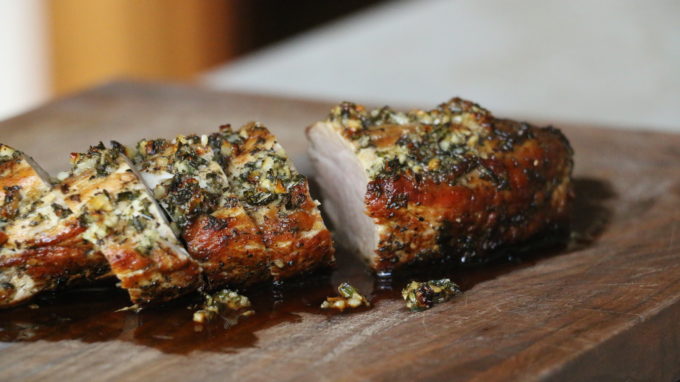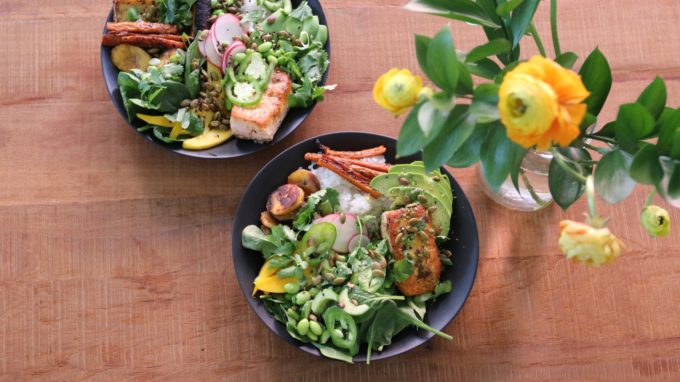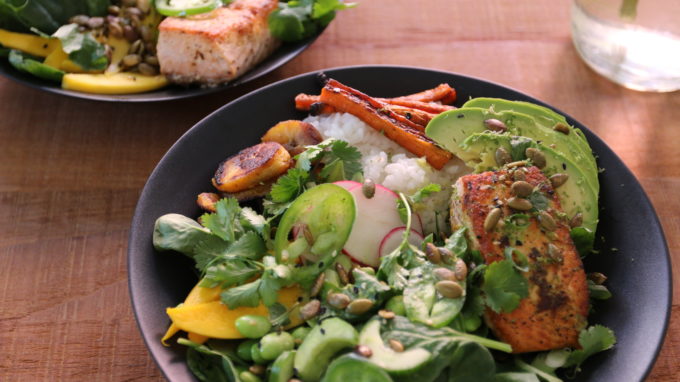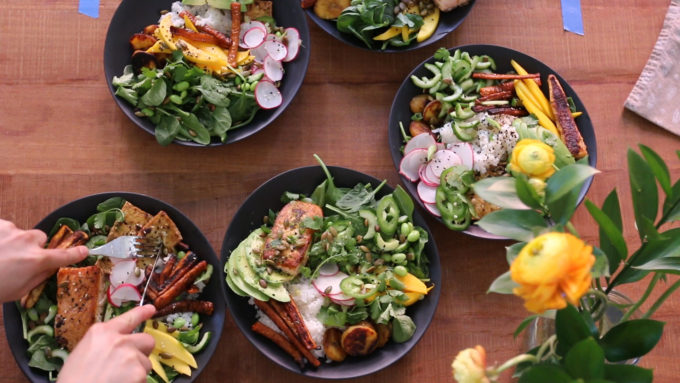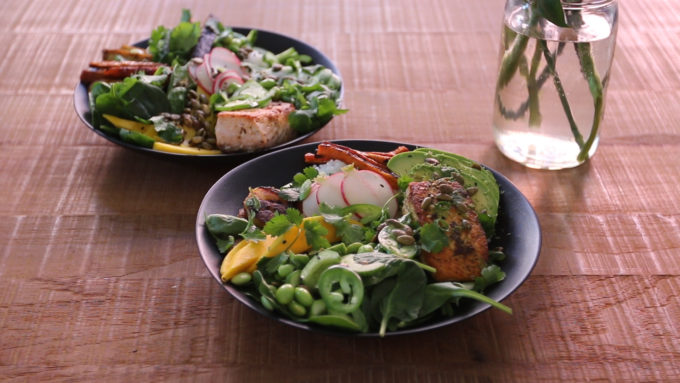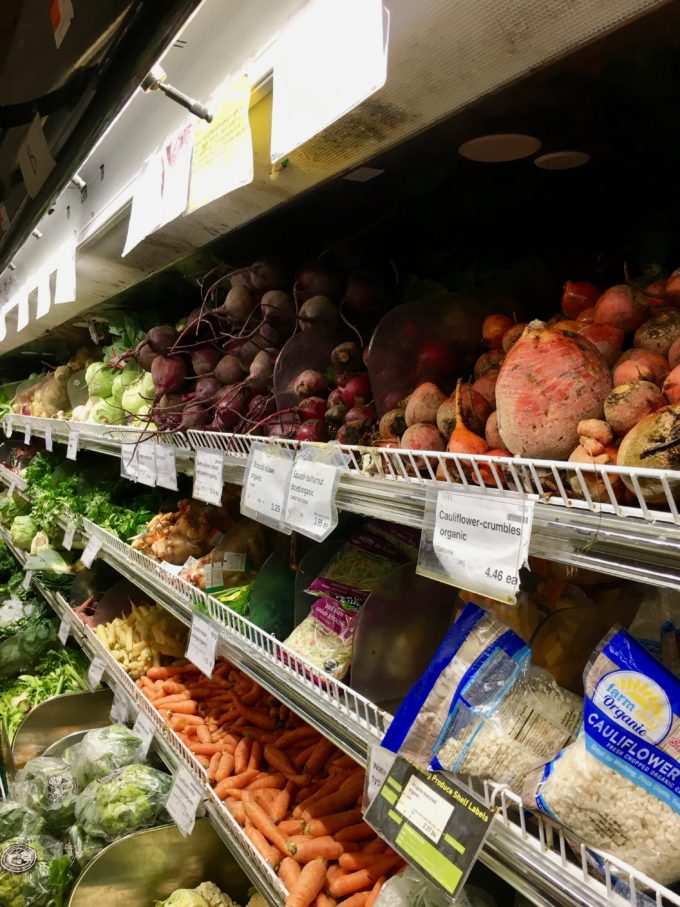
Everyone direct your attention to the nearest produce section, brimming with veggies in every odd shape and color of the rainbow. It’s time to familiarize yourself with the scraggily, weird looking veggies, pulled straight from the ground that have settled on produce shelves for the winter. They include such favorites as carrots, celery, parsnips, radish, turnips, beets, potatoes, onions, shallots, garlic and rutabaga… well maybe not that last one but it’s just so fun to say! Besides rutabaga these are some of the most common things we find in the crisper drawer, probably because they last much longer than your fruits or your greens. They’re something we’re confident using two weeks in a row, which makes our job all the more experimental and exciting.
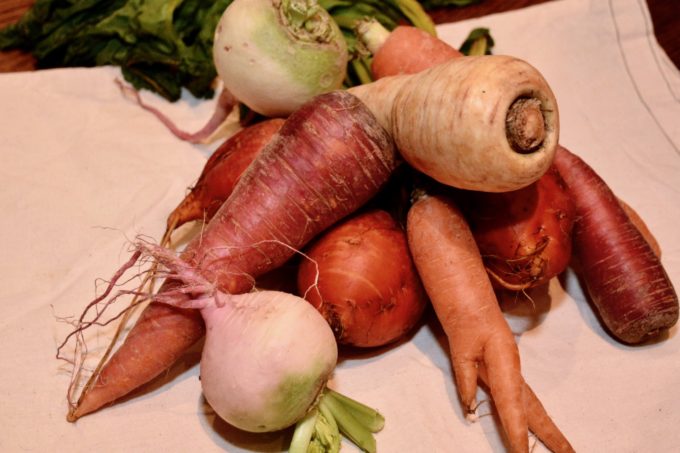
There’s almost nothing I find more comforting than biting into a warm roasted carrot, which is why, when I surveyed my supermarket this weekend, just as the temperature finally dropped below 60, I ended up with mostly carrots in my handcart. I love the way they’re equally delicious raw as they are cooked and how they add just the right amount of sweetness to a dish.
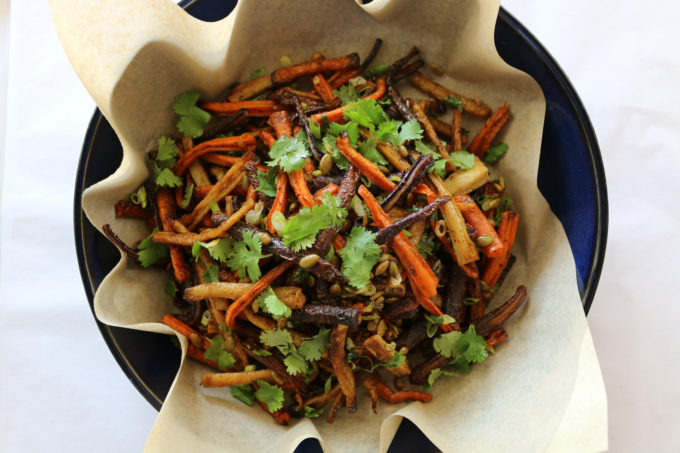
A few more things you should know about carrots:
- You don’t need to peel them unless you’re eating them raw.
- While carrots are very nutritious (vitamin A, C, potassium, etc.) most of the nutrients in carrots actually reside in or just bellow the skin so it’s best not to peel away too much.
- For candy-like caramelized carrots drizzle a little honey or maple syrup on them before roasting.
- As we know carrots come in many colors. But when carrots were first cultivated (some ten thousand years ago) they were actually purple, not the orange color we associate them with most today (www.carrotmuseum.com).
- You really will turn orange if you eat too many of the orange ones!
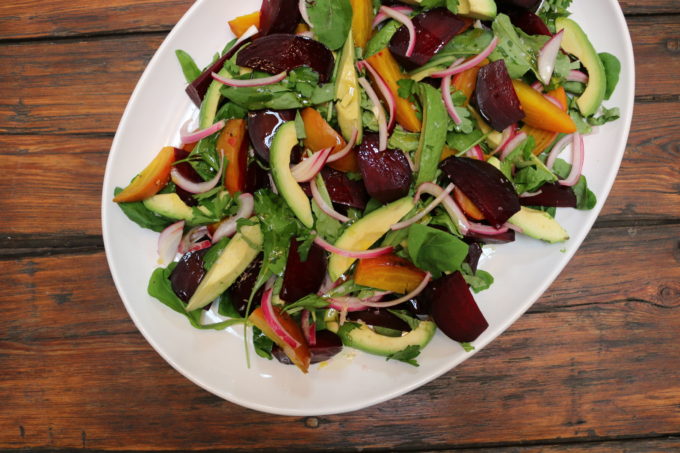
The second root-veggie I find it hard to resist is beets. When I see them on a menu I must have them, especially when they’re paired with goat cheese… mmmm. I love the sweet smell of the steam when you unwrap their foil. I don’t even mind that my hands will look like an art project for the rest of the day (pro tip: feta juice takes it right off).
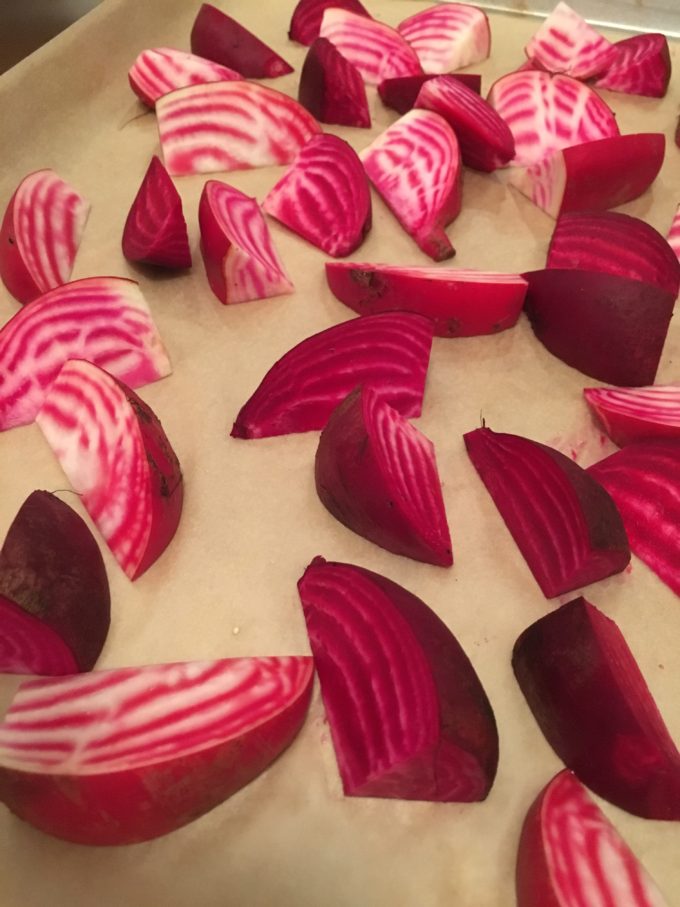
A few more things you should know about beets:
- To steam beets, rinse well, pat dry, sprinkle with salt and wrap in foil. The foil-wrapped bulbs can be placed directly on the oven rack. Just be sure they’re wrap doesn’t have any tears of holes.
- They take a long time (sometimes over an hour) – so plan ahead! For steaming it’s important to try to pick beets that are relatively the same size so they’re tender at the same time. If you’re crunched for time, use smaller beets or cut larger ones into wedges with their skin on and roast them just like you would any other veggie with salt, pepper and olive oil on a sheet tray at 425 degrees. The skins get nice and caramelized that way!
- You can eat them raw: shredded like you would carrots or shaved like you would radish.
- Keep a loose piece of foil or sheet tray on the rack below the beets to collect any spills, saving yourself from that horrible bubbly, smoky mess on the bottom of your oven.
I could go on and on about my favorite root-vegetables because, truth is, I love them all, these are just the ones I’m craving this week:
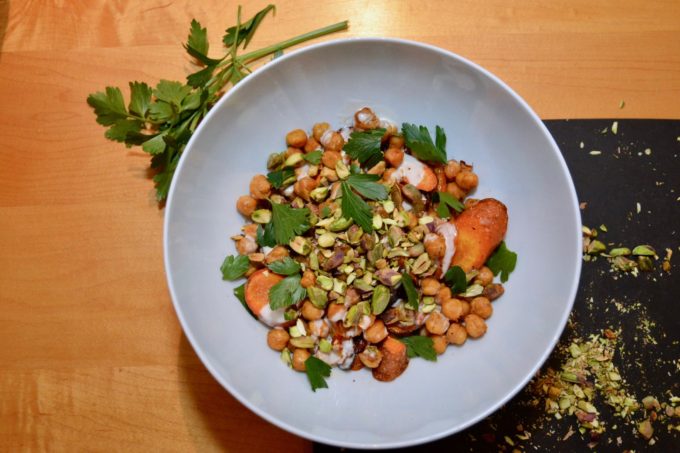
I saw this carrot recipe in the new Smitten Kitchen Cookbook (just hit shelves last weekend and totally worth a peruse) that immediately caught my eye. Because carrots, tahini, crispy chickpeas. But I wanted it to be substantial enough for my whole meal so I decided raw carrots we’re enough and I roasted big chunks instead.
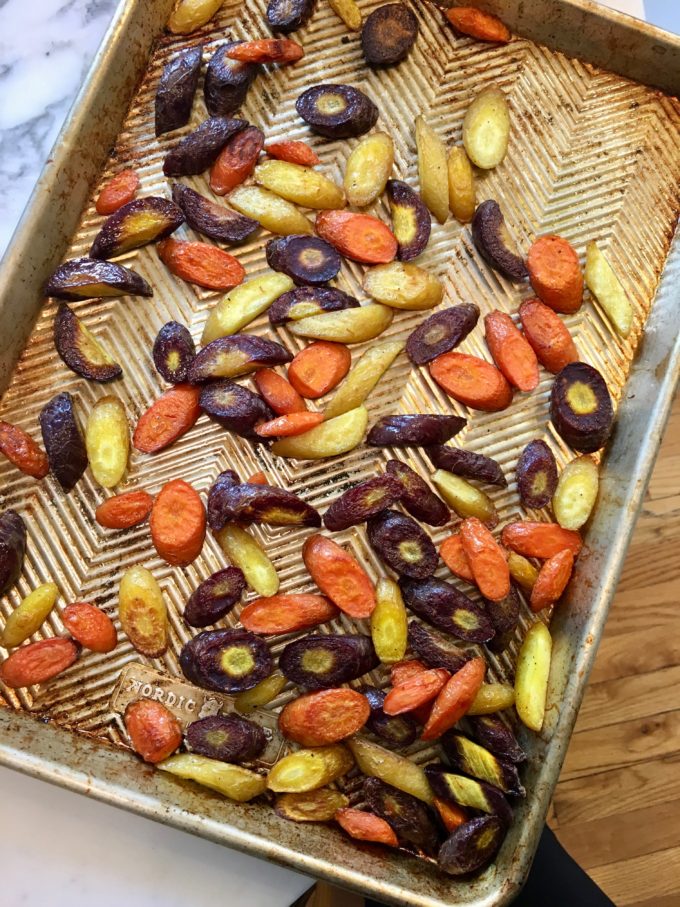
I also added smoked paprika to the chickpeas because it’s delicious.
Carrots
4-5 carrots quartered lengthwise or cut in coins
1 Tbs. olive oil
1 tsp. salt
Pepper to taste
Chickpeas
1 15-oz can chickpeas, drained and patted dry on paper towels
1 Tbs. olive oil
1/2 tsp. salt
1/4 tsp. cumin
¼ tsp. paprika
Dressing
1 medium garlic clove
Juice of one lemon
3 Tbs. tahini
2 Tbs. water, or more as needed
A pinch of salt
Salad
1/4 cup chopped pistachios, roasted
2 sprigs parsley leaves
Roast carrots: Preheat the oven to 425 degrees F. Arrange carrots in a single layer on a large, parchment lined sheet tray. Season with salt, pepper and oil, toss and roast for about 25 minutes, until the carrots are deeply roasted and caramelized.
Chickpeas: Toss chickpeas with oil and seasonings. Spread them on a sheet tray and roast alongside the carrots until crisp and crunchy, about 15-20 minutes.
Vinaigrette: Whisk ingredients in a large bowl until smooth, but not too loose. You may need to add more water to achieve this consistency. Don’t worry this is normal!
Assemble salad: tumble carrots, chickpeas, pistachios and parsley into a large bowl and drizzle with tahini vinaigrette. Enjoy!
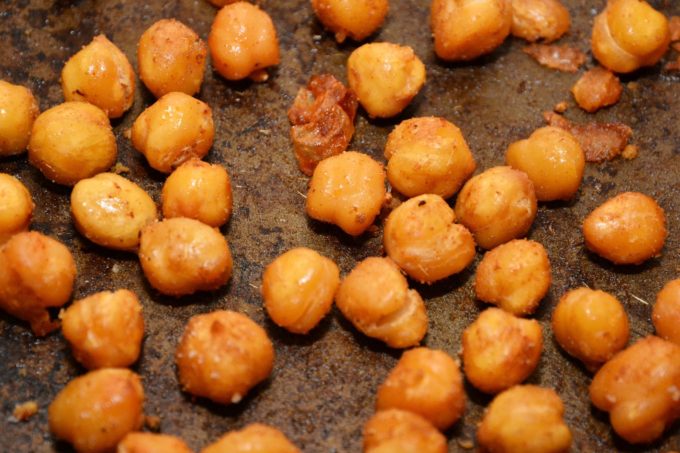
Other favorite carrot recipes:
https://cooking.nytimes.com/recipes/1013106-carrot-tahini-soup-with-coriander-turmeric-and-lemon
https://www.bonappetit.com/recipe/bas-best-carrot-cake
https://smittenkitchen.com/2016/05/roasted-carrots-with-avocado-and-yogurt/
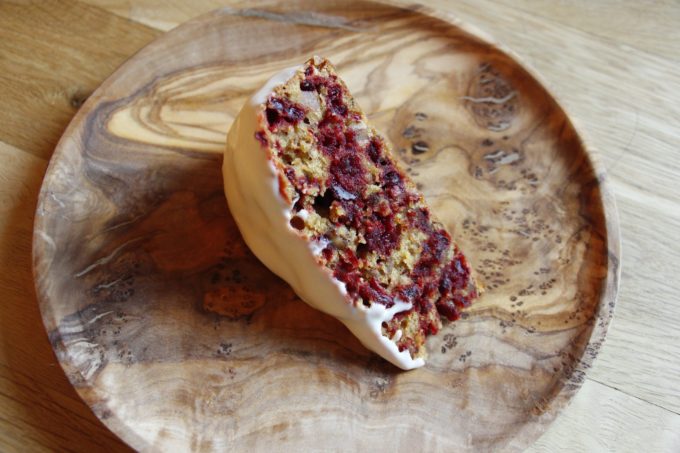
Yotam Ottolenghi & Helen Goh’s beautiful book, Sweet, highlights a couple unlikely root vegetable baked goods. Of course the one that seduced me wasn’t the carrot cake, which is a personal weakness, but the beet cake! With spicy candied ginger and tangy cream cheese frosting it’s certainly a contender!
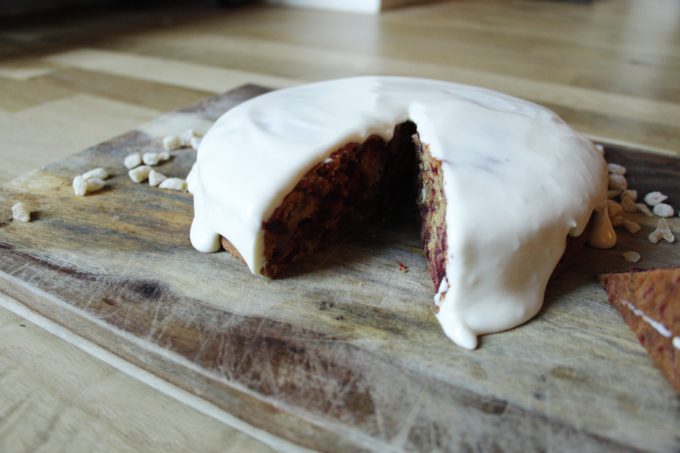
Cake
2/3 cup walnut halves
1 2/3 cups all-purpose flour
¾ cup granulated sugar
2 tsp. baking powder
1/4 tsp. salt
2 red beets, peeled and coarsely grated
Finely grated zest of one orange (1 tbs.)
1/2 cup finely chopped crystalized ginger (they instruct you to steep these in boiling water for 15 minutes, however, I skipped this step to create a little more intense flavor)
2 large eggs
¼ cup soup cream
½ cup sunflower oil
Frosting
5 ½ cream cheese at room temperature
½ cup confectioners’ sugar, sifted (plus more if necessary)
1/3 cup heavy cream
2 1/3 inch piece of ginger grated into a fine sieve placed over a bowl and the flesh squeezed to extract all the juices; reserve the juice.
To make cake: Preheat the oven to 350 degrees F. Grease an 8-inch round cake pan and line with parchment paper, then set aside.
Toast the walnuts in a skillet in the oven for 15 minutes.
Place the flour, sugar, baking powder, baking soda and salt in a large mixing bowl and whisk to combine and aerate. Add the beets, orange zest, walnut and ginger, but do not stir.
Place wet ingredients: eggs, sour cream and oil in another small bowl and whisk to combine.
Pour mixture into the cake pan and bake in the middle of the oven for 50-55 minutes or until a tester comes out clean. Remove from oven and set aside to cool for 30 minutes before removing from the pan.
To make frosting: Place the cream cheese in the bowl of an electric mixer with the whisk attachment in place and beat for about 10 seconds until smooth. Add the confectioner’s sugar and beat until well incorporated. Add the cream and beat for about 1 minute, until the frosting is thick and smooth. Add the ginger juice, beat for a few more seconds. If the frosting seems a little loose just add a little more confectioner’s sugar. Once the cake is cooled, frost with an offset spatula and slice to serve!
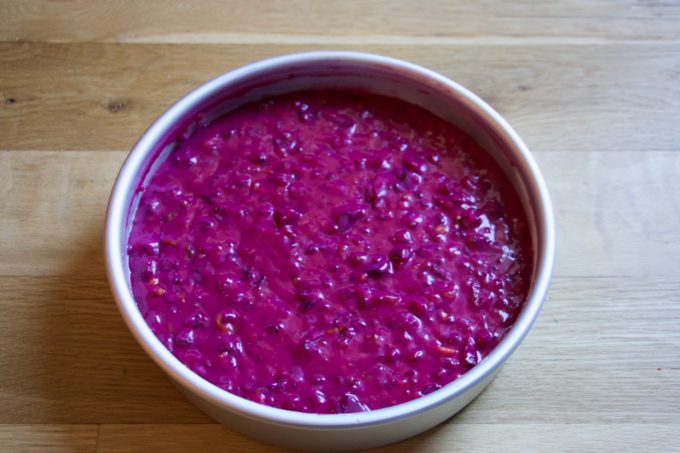
Other favorite beet recipes:
http://www.feastingathome.com/beet-bruschetta-with-goat-cheese-and-basil/
http://www.greenkitchenstories.com/grilled-beet-burgers/
https://www.loveandlemons.com/beet-hummus/
Happy cooking,
Charlotte
